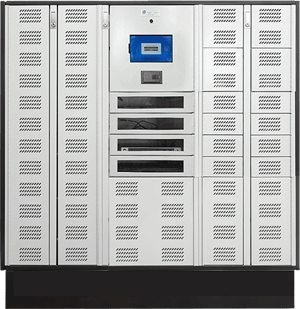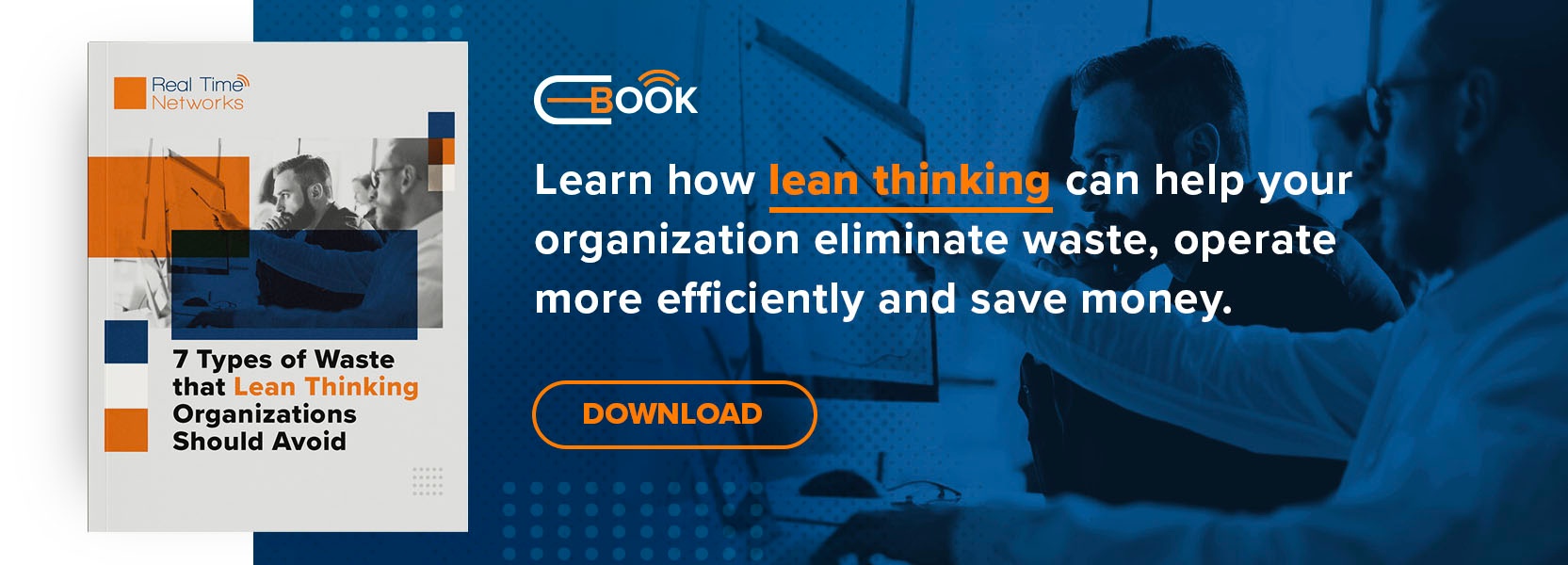By Maurizio DiVito | June 1, 2022
Table of Contents
ISO standards first appeared near the end of World War II. In the nearly 80 years since, organizations worldwide have used these International Organization for Standardization (ISO) standards to guide how they perform countless business activities.
Of course, no two businesses work the same way, but every business could benefit from adopting ISO guidelines and smart technology. This article explores what ISO standards are, what the principle of “continuous improvement” really means, and how the latest generation of smart business management systems can help automate ISO practices.
What are ISO Standards?
ISO is an independent, non-governmental organization that brings together experts from all over the world to develop voluntarily, consensus-based, international standards. These standards are put in place to reflect the best and safest way of doing something (maintaining consistency and quality), while also working toward a sustainable future.
You can think of ISO standards as a framework of best practices when operating either a particular type of business or implementing any business process. ISO Standards cover just about all aspects of daily life and work for businesses of every size. They incorporate a range of industries, including manufacturing, services, environmental, and information technology. Each defines different requirements and guidelines that ensure consistency, quality, and safety, with the aim of putting the consumer first.
ISO standards also are not prescriptive. They tell you what you should do and what you should care about, but not how to do those things. Too much depends on specific business environments, so each practicing organization needs to take the ISO standards and adapt them to how they operate.
There are many different ISO standards out there, sometimes it can be hard to understand which ones are the most suitable for your business. While some are industry-specific, many of the most popular standards are generic and can be implemented into any organization in any sector. Some of the more popular ISO standards are:
- Quality management standards help you efficiently and consistently deliver high-quality products or services. Typically referred to as ISO 9001, this is by far the most popular of the ISO 9000 family of standards. The ISO 9000 family contains 14 standards in total, but you can only certify to ISO 9001:2015.
- Environment management standards help you improve the sustainability of business processes and reduce environmental impact. Similar to ISO 9000, the ISO 14000 standard includes multiple standards, but you can only certify to ISO 14001:21015.
- Information Security Management standards guide how you protect sensitive information and physically secure the infrastructure on which it runs. One of the most popular in the ISO 27000 family to certify to is ISO 27001:2013.
- Health and safety standards are designed to prevent occupational injuries and diseases, including promoting and protecting physical and mental health. The ISO 45001:2018 is the most popular standard in this area.
- Energy management standards, particularly ISO 50001:2011, is meant for companies to put in place an Energy Management System dedicated to improving energy usage and efficiency including reducing an organization’s energy footprint by reducing greenhouse gas emissions and energy costs.
- Risk Management standards are very important for an organization in any field to be able to manage risk effectively. ISO 31000:2018 provides principles and generic guidelines on managing risks faced by organizations and was not developed for a particular industry group, management system or subject matter field in mind, but rather to provide best practice structure and guidance to all operations concerned with risk management.
ISO Standards, Six Sigma and Lean Management – It's Not a Competition
ISO is a shell of requirements used as the basis to develop the entirety of management systems for a business, while Six Sigma is solely a set of tools and methods used to improve specific business processes.
Lean Management is typically focused entirely on manufacturing, but often shapes every facet of a business. On the other hand, Six Sigma combines works with Lean Management and creates a powerful toolkit for addressing waste reduction.
Lean thinking originated in Japan, specifically at Toyota. The key tenet of lean thinking is the notion that everything a company does should deliver value to its customers. If something doesn’t deliver value or doesn’t deliver it efficiently, then it is wasteful. In lean thinking, waste must be eliminated wherever it is found.
You don’t need to choose whether to use lean thinking or ISO or Six Sigma. In fact, you often benefit from applying all of them. Following Six Sigma or lean practices can help you meet or maintain ISO standards more easily and consistently. For example, lean can help you identify and remove wasteful activities, ultimately improving your management systems and compliance with the applicable ISO standard.
To better understand how they can work together, let’s explore a few of the most popular ISO standards that Real Time Networks helps deploy smart management technology to support.
Relevant ISO Standards
ISO 9001:2015 — Quality Management
This standard lays out the internationally agreed upon requirements for a company to have a quality management system (QMS). A QMS documents the roles, responsibilities, and procedures a company must follow to guarantee a certain level of quality in the product or service they deliver. Showing ISO 9001 compliance is usually done to meet regulatory standards or meet customer expectations.
Smart management systems, like an AssetTracer intelligent locker system, help ensure necessary equipment is available when it is needed, in fully working order. In addition, they can help you meet quality management standards by ensuring required tools are always on hand for vital work.
Other areas of ISO 9001 where RTN’s key and asset management systems can be used to effectively enhance organization’s compliance and operation:
- Actions to address risks and opportunities
- Infrastructure
- Monitoring and measuring resources
- Awareness
- Operational Planning and Control
- Control of externally provided processes, products and services, including Vendor Management
- Production and Service Provision
- Identification and Traceability
- Property Belonging to Customers/External Providers
- Performance Evaluation
- Continuous Improvement
- Product Non-Conformity
ISO 14001:2015 — Environmental Management
This standard specifies requirements for managing an organization’s environmental impact. As with the other ISO standards we’re discussing here, a company may get certified in ISO 14001 to meet regulatory demands or demonstrate their environmental management practices to customers.
But there are operational reasons to get certified in it as well. For example, ISO 14001 compliance can help a company reduce its carbon footprint and eliminate waste in its processes.
As part of a company’s environmental management program, ISO 14001 dictates an emergency preparedness plan. In part, this is to mitigate damage to local natural resources from fire, chemical spills, or other accidents. RTN’s Workplace Safety solutions help ensure evacuations and emergency response efforts go smoothly.
Other areas of ISO 14001 where RTN solutions can be used to effectively enhance your management system’s compliance and operation:
- Actions to address risks and opportunities
- Hazard identification and assessment of risks and opportunities
- Resources
- Awareness
- Operational Planning and Control
- Emergency Preparedness and Response
- Evaluation of Compliance
- Continuous Improvement
ISO 45001 standard — Health and Safety Management
This standard provides the means to meet occupational health and safety compliance and regulatory legislation. The goal of this standard is to provide guidance and direction on how an organization should manage and mitigate its occupational health & safety risks. All RTN’s products can be utilized as a package to reduce health and safety risk, from centralized key management with KeyTracer, to centralized asset management with AssetTracer, and Workplace Safety systems all working together to make the workplace safer and leading to better safety compliance.
Other areas of ISO 45001 where our solution can be used to effectively enhance your management system’s compliance and operation:
- Actions to address risks and opportunities
- Environmental Aspects
- Resources
- Awareness
- Operational Planning and Control
- Emergency Preparedness and Response
- Performance Evaluation
- Continuous Improvement
Whether standing alone or integrated with another management system, such as ISO 9001 (quality) or ISO14001 (environmental), the clauses of all the standards mentioned above provide guidance and direction on how an organization should manage and mitigate its risks and the commitment the company has made to its customers, the environment or its employees.
What is Continuous Improvement?
All these standards include a section which outlines the need for companies to make an effort to make their systems better through determining opportunities for improvement and implementing any necessary actions to make it a reality.
ISO-compliant organizations should never be stagnant. A static system will eventually break down because it is not adapting to the outside world, which is always changing. ISO standards encourage continuous improvement to combat stagnation and make systems better.
The goal of continual improvement is to help an organization increase its chances of achieving its strategic objectives, including reducing costs and optimizing outputs. While the nuances of each improvement clause might be worded slightly differently, the approach to implement improvement remains the same, namely:
- Identifying areas to improve
- Establishing objectives
- Searching for possible solutions to achieve the objectives
- Evaluating those solutions and making a selection
- Implementing the solution
- Checking to see if the solution selected met the objectives
And as it says right in the name, the process must be continual. It needs to become a feedback loop that repeats itself. After each round of improvements, you should review the results to determine further opportunities.
How to Generate Continuous Improvement
There are many ways to identify opportunities for improvement. They range from brain-storming sessions, internal or external feedback from employees, results of internal or external process audits to more formal and strategic continuous improvement initiatives drawing on company-wide resources.
For the most part, when considering continuous improvement, you focus on opportunities to eliminate waste in an organization – much like in lean methodologies. However, when systems we have put in place fail or are weak, waste is allowed to exist, impacting our ability to meet our objectives efficiently and effectively.
Waste comes in various forms. However, for our discussion of smart systems, two of the most common are:
- Waste created by waiting—such as waiting for people, information, equipment, or inventory.
- Waste created by inefficient work—such as poor workspace layouts, unnecessary steps, or inadequate training.
One way to eliminate waste is to automate certain tasks to ensure repeatability and consistency. For example, let’s say you work in a warehouse that is ISO 9001 registered. Your customers depend on receiving timely shipments from your organization a critical component of the “Customer Focus” aspect of the ISO 9001 standard.
Your warehouse utilizes handheld scanners to record inventory and shipment movement in and out of the warehouse. Unfortunately, there are a limited number of rechargeable scanners for a large group of users. When a colleague doesn’t return the device to its proper station or forgets to charge the unit for the next person, these small instances of waste can cause ripple effects throughout the organization, potentially impacting its customers, such as missing a shipping deadline.
To address this waste, the company purchases extra equipment. Then it assigns personnel to oversee device usage, inventory and monitoring. But unfortunately, that just creates new waste costing thousands of dollars annually in wasted labor and equipment costs.
They could automate the process in managing the scanners by by implementing an asset tracking system. Now all the assets are accounted for at any time, information of when they were taken and returned is tracked, including by whom, all with alerts when items are late or missing. Real Time Networks offers AssetTracer smart asset lockers for this purpose. How many times have 2 or 3 people had to search for missing items! This problem – and its related waste – is eliminated with the accountability and tracking ability of an AssetTracer system.
They could automate the process. One possible solution this company could consider is an asset tracking system to manage its scanners automatically. Real Time Networks offers AssetTracer smart asset lockers for this purpose.
What are Smart Lockers?
A smart locker is an automated distribution system with a built-in computer and sensor network. That computer network manages access to stored equipment and, thanks to its sensors, can monitor, analyze, and change the locker system’s performance in real time.
Each locker system has an access terminal where users authenticate themselves to sign equipment in or out. You can prompt users for additional information using a checklist during transactions. For example, you can require them to report equipment damage and errors when the unit is returned to the locker – saving time and money by ensuring a damaged or otherwise inoperable item is not in use.
Content surveillance sensors monitor equipment stored in the lockers. These systems typically use wireless RFID sensors to scan devices as users sign them in or out. In addition, some devices use wired USB connections for charging. Those connections can also read the identity and status of certain devices for added insight.
Data collected from the access terminal and the content surveillance network feeds into the smart locker system’s management portal, which you can access from authorized desktops or mobile devices. You can monitor device usage, manage users, and run reports from that management portal. This data will give you valuable insight into usage trends and productivity that you don’t have today.
Schedule a free consultation with one of our experts and learn how we can help your organization eliminate waste, operate more efficiently and save money.
Subscribe to our blog

Maurizio DiVito
Chief Operating Officer





